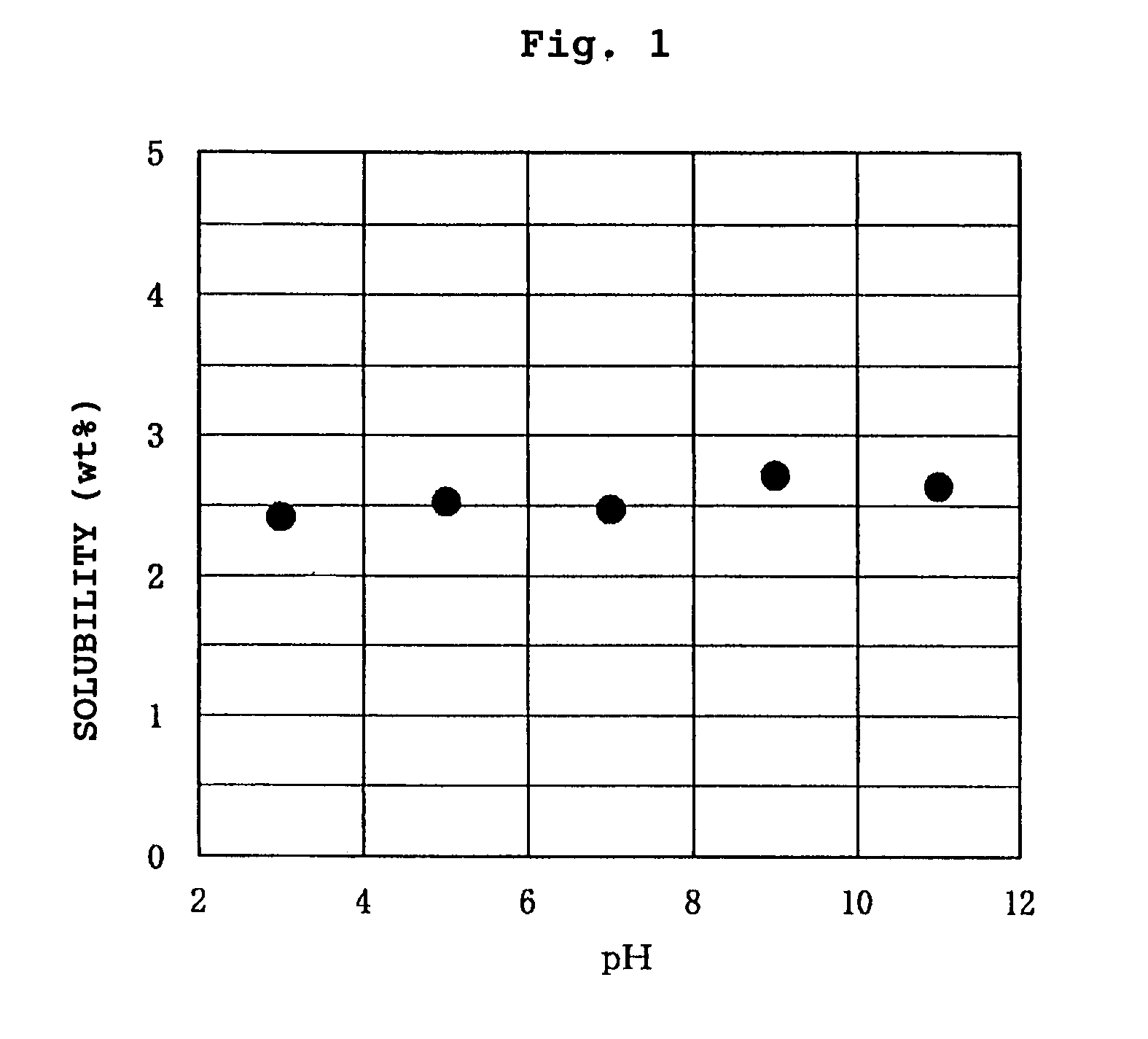Polishing pad
a technology of polishing pad and slurry, which is applied in the field of polishing pad, can solve the problems of difficult to maintain a polishing rate and blockage of pores, and achieve the effects of high polishing rate, excellent slurry retainability, and high degree of hardness
- Summary
- Abstract
- Description
- Claims
- Application Information
AI Technical Summary
Benefits of technology
Problems solved by technology
Method used
Image
Examples
example 1
[0086]80 vol % of 1,2-polybutadiene (product of JSR Corporation, trade name “JSR RB830”) which was crosslinked later to become a matrix material and, as water-soluble particles, 20 vol % of β-cyclodextrin (product of BIO RESEARCH CORPORATION OF YOKOHAMA, trade name “DEXPAL β-100”; hereinafter, coupled β-cyclodextrin will be referred to as “modified β-cyclodextrin”) with an average particle diameter of 16 μm which had been coupled with 1 wt % of γ-(2-aminoethyl)-aminopropyltrimethoxysilane in advance were mixed together in an extruder heated to 170° C. Thereafter, 0.3 parts by weight of organic peroxide (product of NOF CORPORATION, trade name “PERHEXIN 25B”) was added, and the resulting mixture was further mixed at 130° C. and then crosslinked and molded in a mold at 170° C. for 20 minutes so as to obtain a polishing pad having a diameter of 60 cm and a thickness of 3 mm.
[0087]The obtained pad had a weight of about 1 kg and contained 280 g of modified β-cyclodextrin. This pad and 2 k...
example 2
[0101]60 parts by volume of uncrosslinked 1,2-polybutadiene (product of JSR Corporation, trade name “JSR RB830”), 20 parts by volume of uncrosslinked ethylene-vinyl acetate copolymer (product of TOSOH CORPORATION, trade name “ULTRASEN 630”), and 20 parts by volume of β-cyclodextrin (product of BIO RESEARCH CORPORATION OF YOKOHAMA, trade name “DEXPAL β-100”, average particle diameter: 20 μm) as water-soluble particles were mixed together by use of a twin-screw extruder adjusted to 160° C. There after, 1.0 parts by weight of organic peroxide (product of NOF CORPORATION, trade name “PERCUMYL D40”) was added, and the resulting mixture was further mixed and then extruded into a mold. Then, the mixture was kept at 170° C. for 18 minutes so as to be crosslinked, thereby obtaining a polishing pad having a diameter of 60 cm and a thickness of 3 mm. Thereafter, on the polishing surface of the polishing pad, a plurality of circular grooves with an average of groove widths of 0.5 mm, an average...
PUM
| Property | Measurement | Unit |
|---|---|---|
| pH | aaaaa | aaaaa |
| pH | aaaaa | aaaaa |
| wt % | aaaaa | aaaaa |
Abstract
Description
Claims
Application Information
 Login to View More
Login to View More - R&D
- Intellectual Property
- Life Sciences
- Materials
- Tech Scout
- Unparalleled Data Quality
- Higher Quality Content
- 60% Fewer Hallucinations
Browse by: Latest US Patents, China's latest patents, Technical Efficacy Thesaurus, Application Domain, Technology Topic, Popular Technical Reports.
© 2025 PatSnap. All rights reserved.Legal|Privacy policy|Modern Slavery Act Transparency Statement|Sitemap|About US| Contact US: help@patsnap.com

